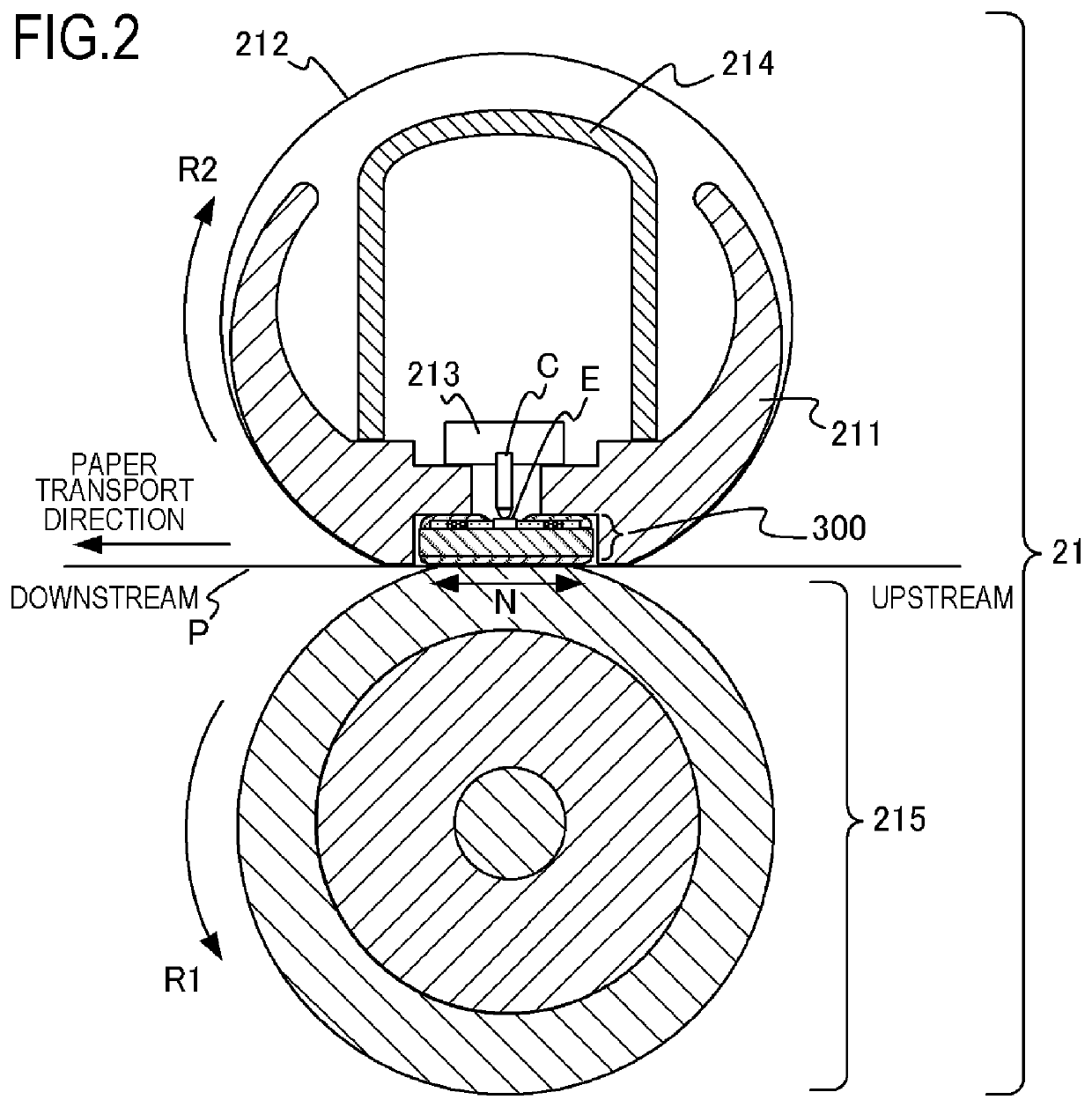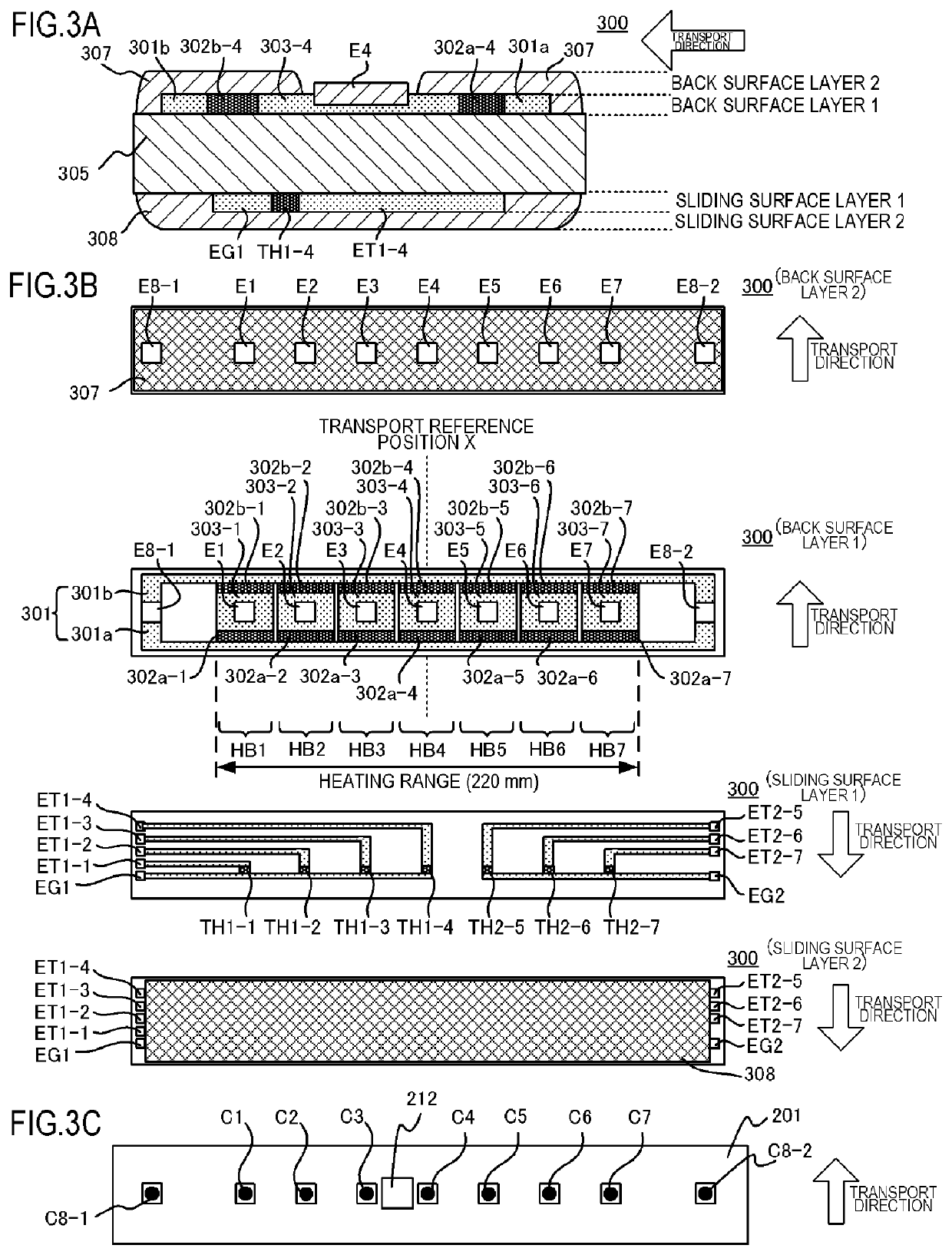Image forming apparatus
a technology of image forming apparatus and forming tube, which is applied in the direction of electrographic process apparatus, instruments, optics, etc., can solve the problems of reducing usability and increasing the power consumption of the image forming tube, and achieve the effect of minimizing the drop in throughpu
- Summary
- Abstract
- Description
- Claims
- Application Information
AI Technical Summary
Benefits of technology
Problems solved by technology
Method used
Image
Examples
first example
Prediction of Required Power for Fixing—First Example
[0087]A first example of the required power for fixing predicting unit 204 will be described with reference to FIG. 7. The lower part of FIG. 7 indicates a prediction of power that is supplied to the fixing apparatus 21 from the entry of the recording material P1 to the fixing apparatus 21 to the exit of the recording material P2 from the fixing apparatus 21 (fixing nip portion N). The ordinate indicates the power that is supplied to the fixing apparatus 21, and the abscissa indicates the elapsed time from the entry of the recording material P1 to the fixing apparatus 21. The upper part of FIG. 7 indicates the paper position, image position and print percentage of the recording materials P1 and P2. The timing at (1) in FIG. 7 indicates a timing at which the rear end of the image on the recording material P1 exits the fixing nip portion N, and at this timing, the control is switched to the control for the next recording material P2...
second example
Prediction of Required Power for Fixing—Second Example
[0098]A second example of the required power for fixing predicting unit 204 will be described with reference to FIG. 8. The lower part of FIG. 8 indicates a prediction of power that is supplied to the fixing apparatus 21 from the entry of the recording material P1 to the fixing apparatus 21 to the exit of the recording material P2 from the fixing apparatus 21 (fixing nip portion N). The ordinate indicates the power that is supplied to the fixing apparatus 21, and the abscissa indicates the elapsed time from the entry of the recording material P1 to the fixing apparatus 21. The upper part of FIG. 8 indicates the paper position, image position and print percentage of the recording materials P1 and P2 in this case. The timing at (1) in FIG. 8 indicates a timing at which the rear end of the image on the recording material P1 exits the fixing nip portion N, and at this timing, the control is switched to the control for the next record...
example 1
Operation Flow in Example 1
[0111]In Example 1, it is assumed that the paper size (recording material size) is “LETTER”, the environment temperature is “20° C.”, 15 recording materials are continuously printed, and stapling is performed every 5 prints. In Example 1, stapling is performed every 5 prints, therefor stapler is driven a total of three times. At the timings of operating stapler the first time and the second time, the subsequent recording material P has passed the fixing apparatus 21. In Example 1, the timing to operate the stapler for the first time is assumed to be at the timing of (1) indicated in FIG. 9, and between the sixth recording material P and the seventh recording material P. The timing to operate stapling for the second time is assumed to be at the timing indicated in (1) in FIG. 10, and between the eleventh recording material P and the twelfth recording material P. In the timing to operate the stapler for the third time, however, all the recording materials P ...
PUM
 Login to View More
Login to View More Abstract
Description
Claims
Application Information
 Login to View More
Login to View More - R&D
- Intellectual Property
- Life Sciences
- Materials
- Tech Scout
- Unparalleled Data Quality
- Higher Quality Content
- 60% Fewer Hallucinations
Browse by: Latest US Patents, China's latest patents, Technical Efficacy Thesaurus, Application Domain, Technology Topic, Popular Technical Reports.
© 2025 PatSnap. All rights reserved.Legal|Privacy policy|Modern Slavery Act Transparency Statement|Sitemap|About US| Contact US: help@patsnap.com



